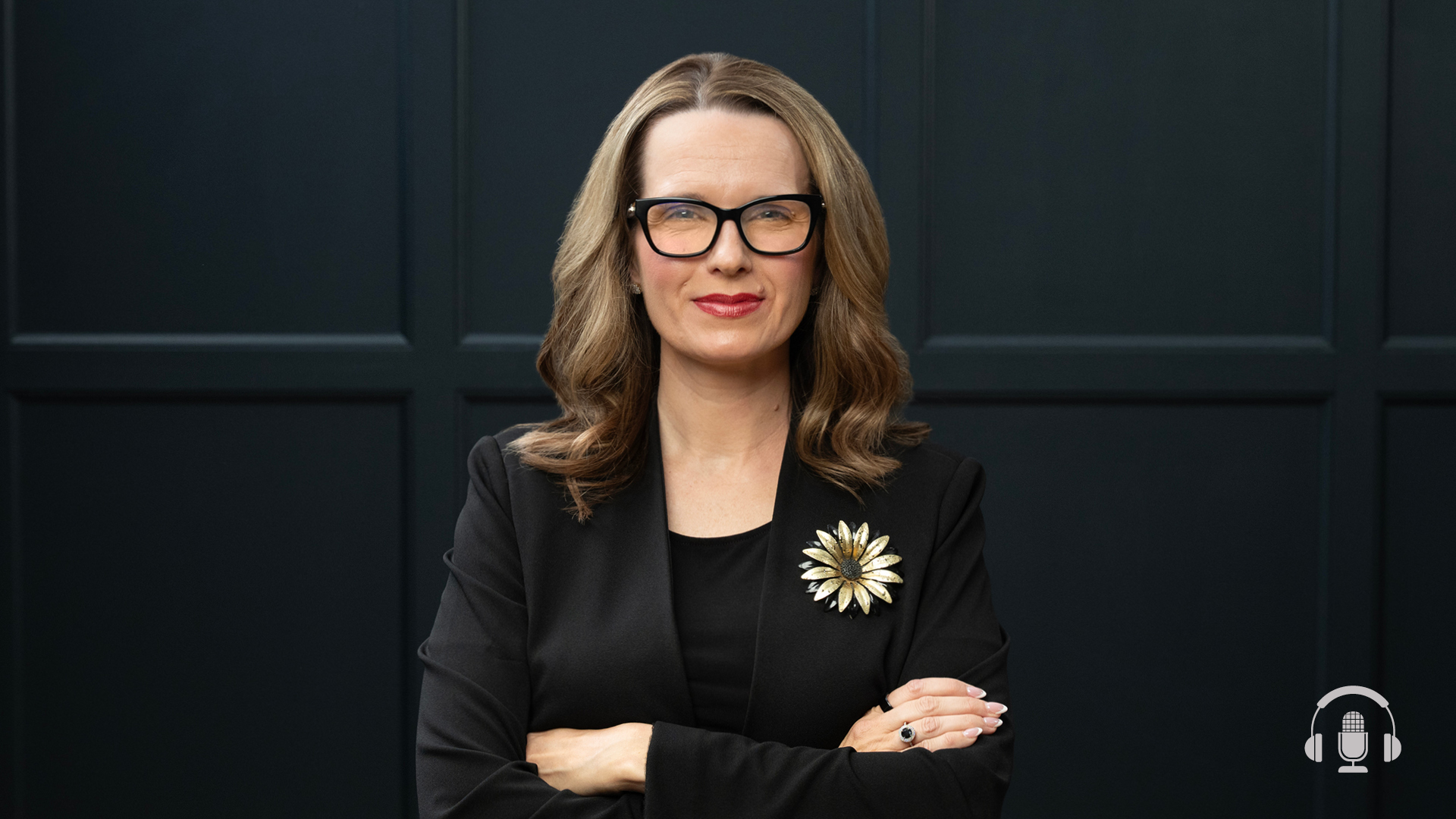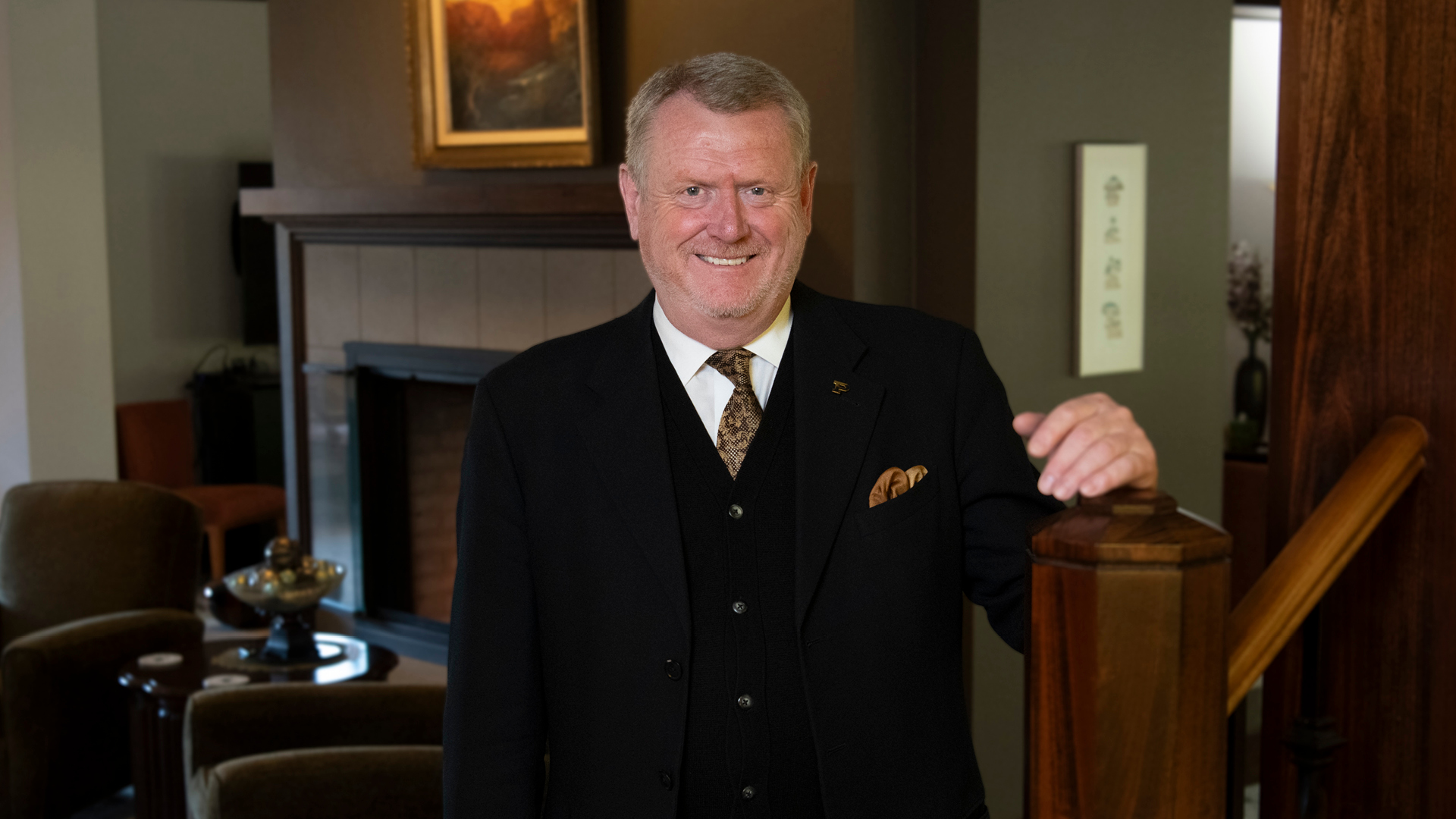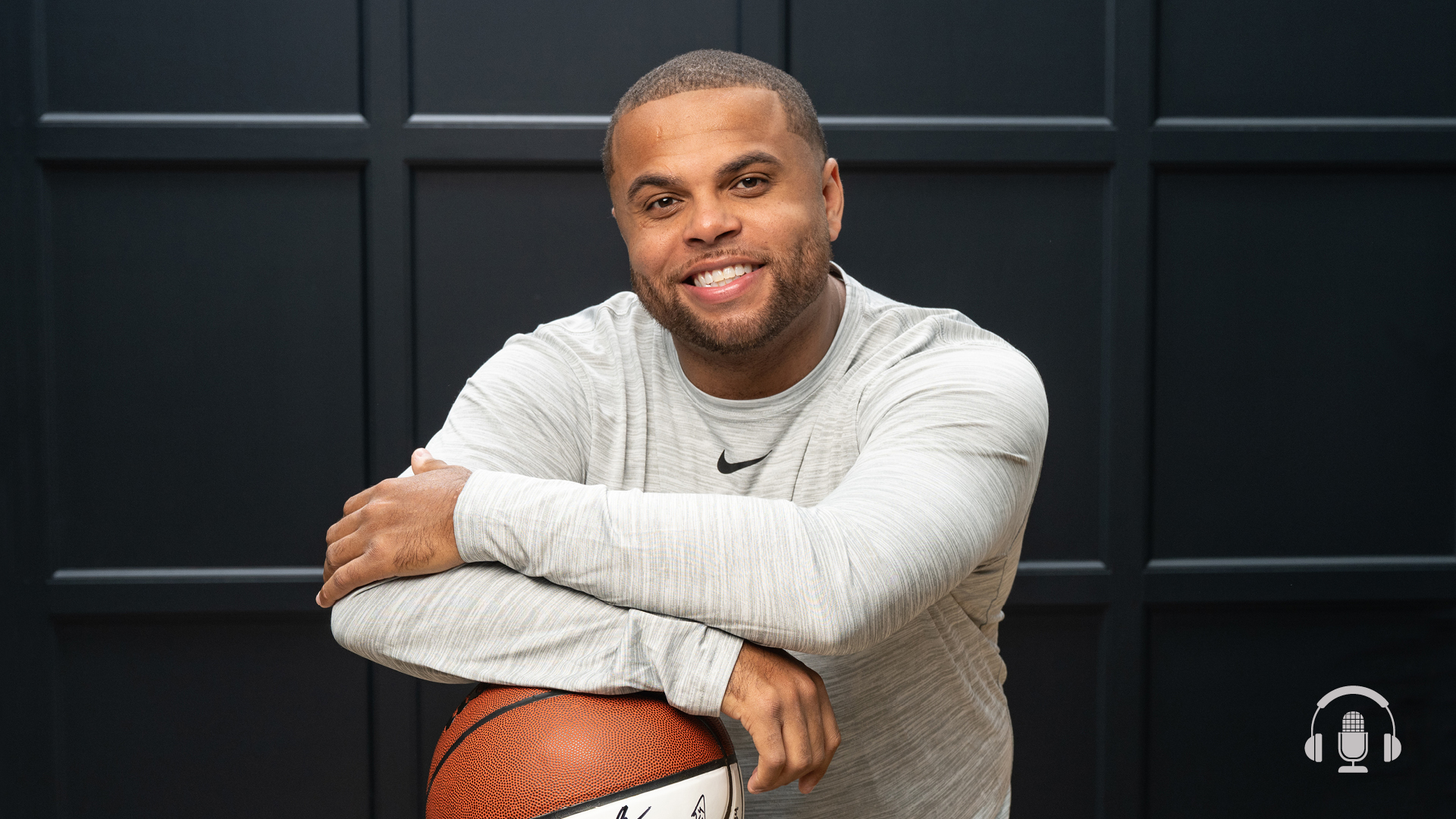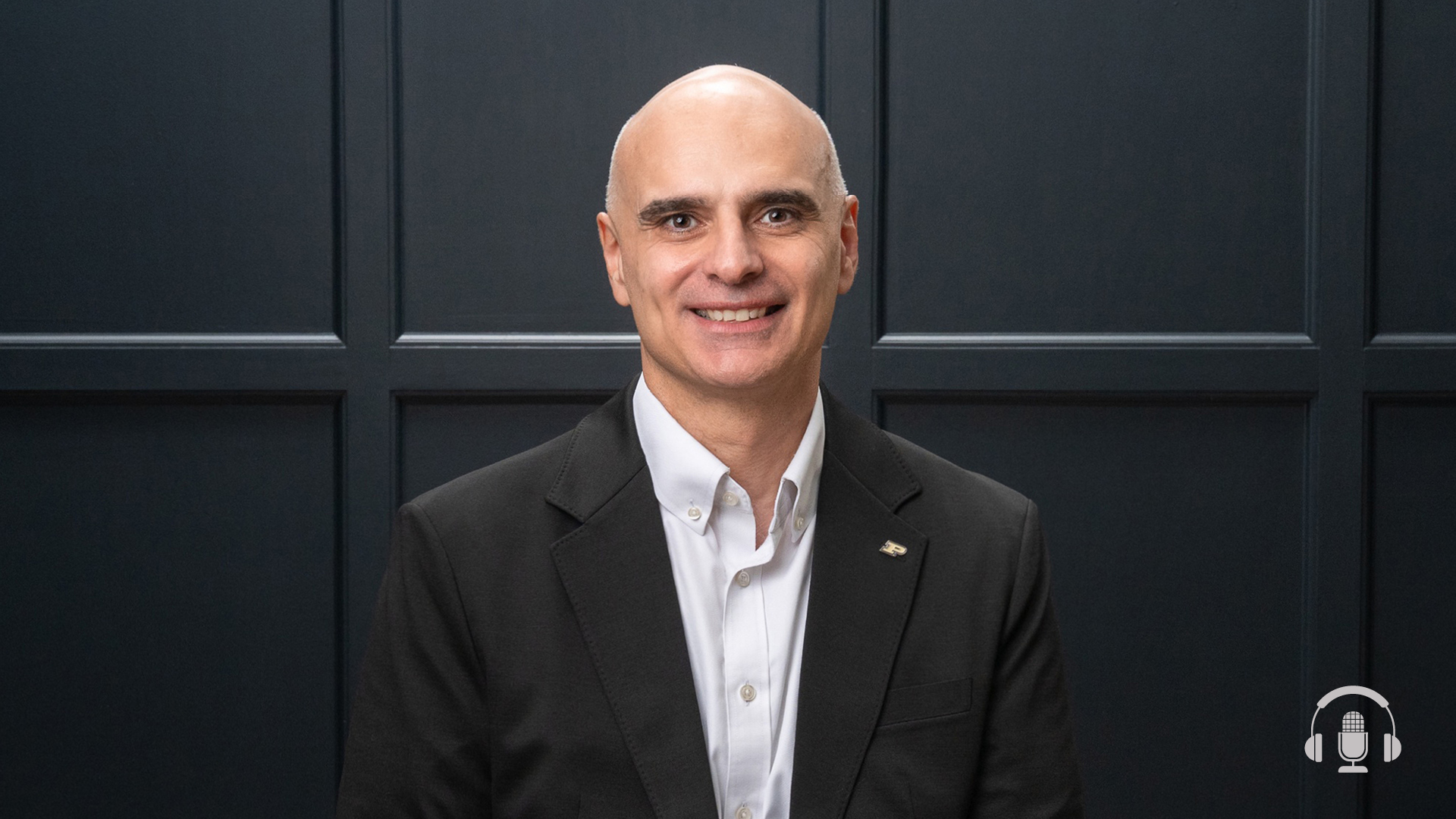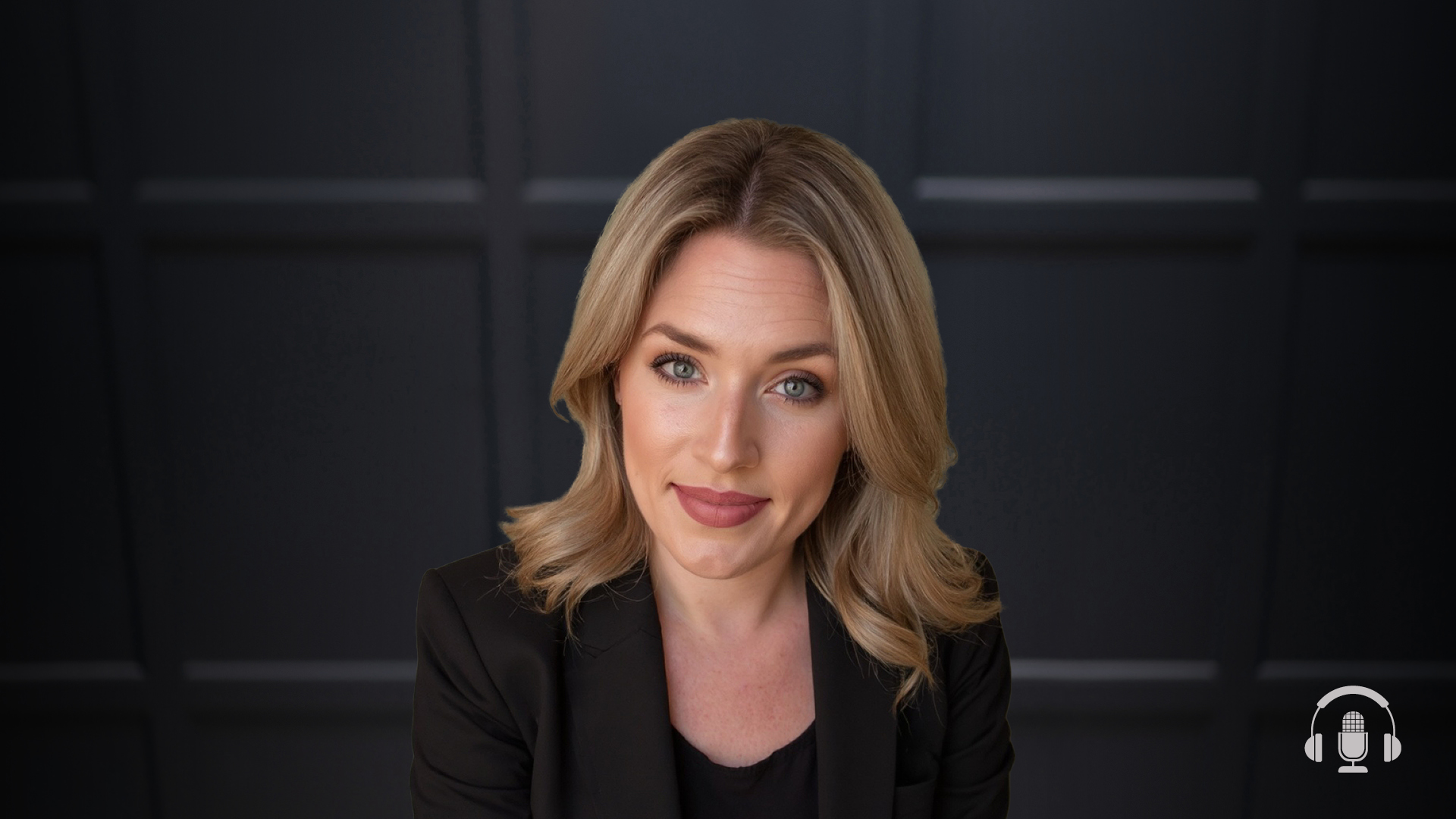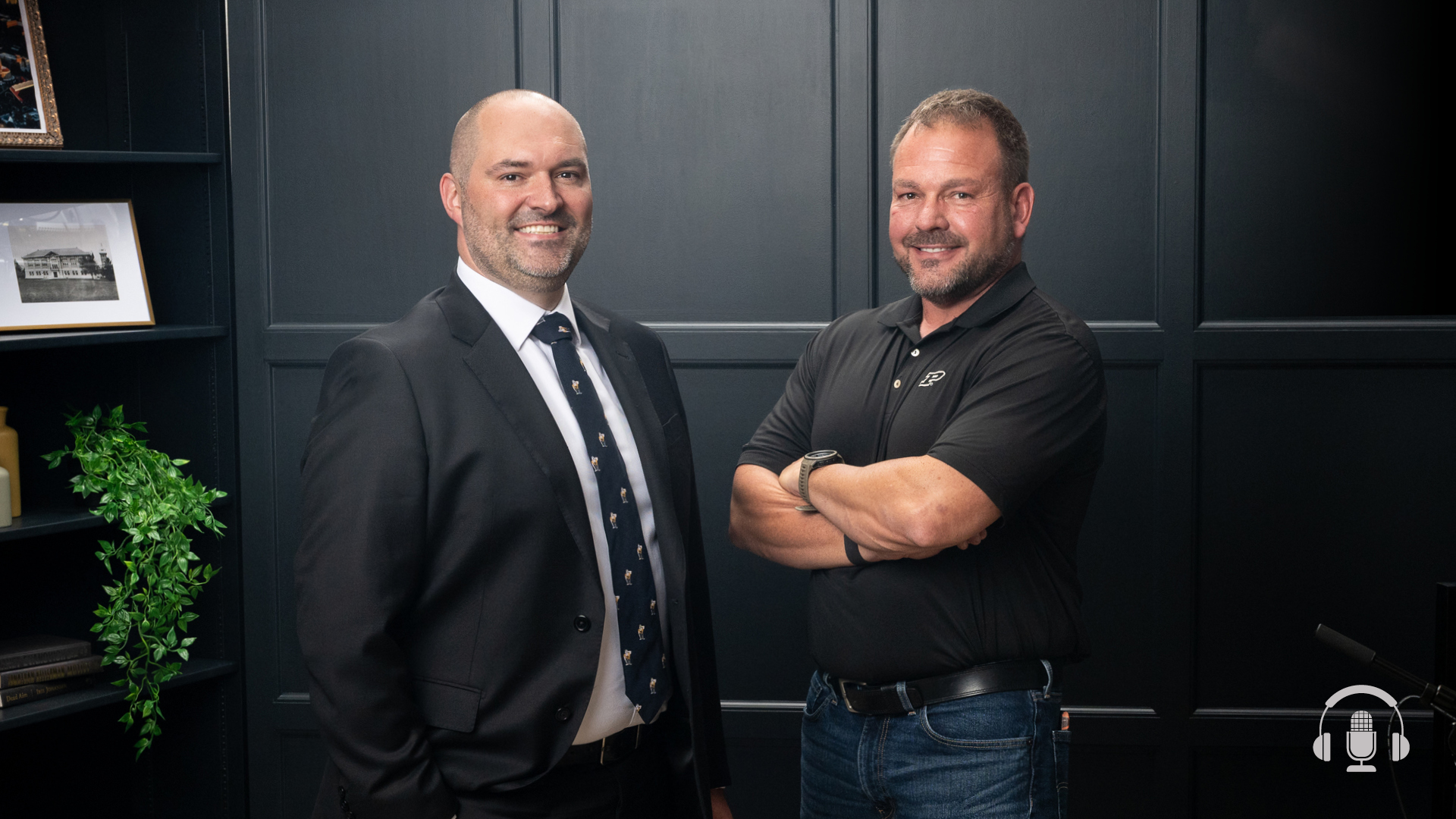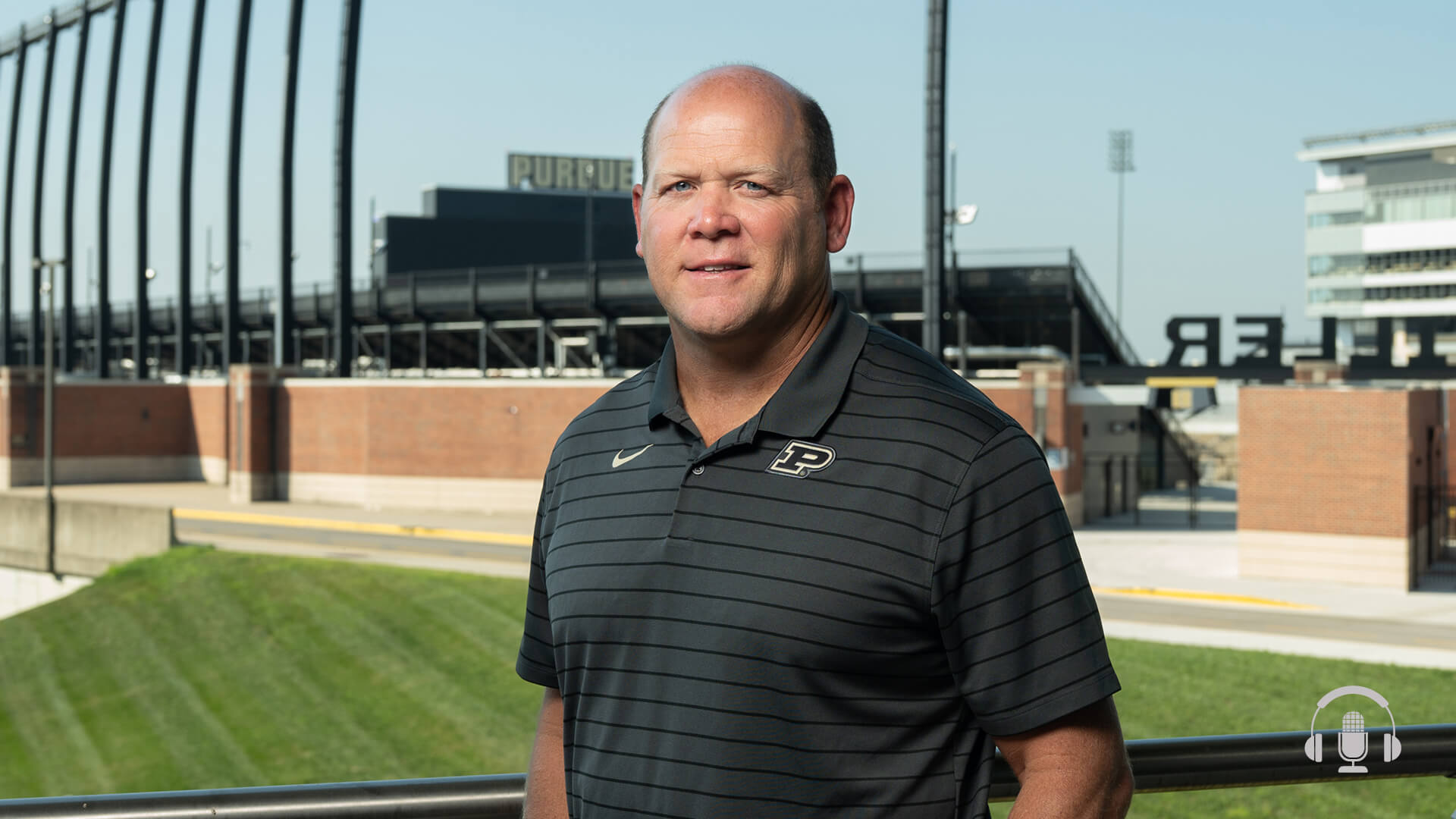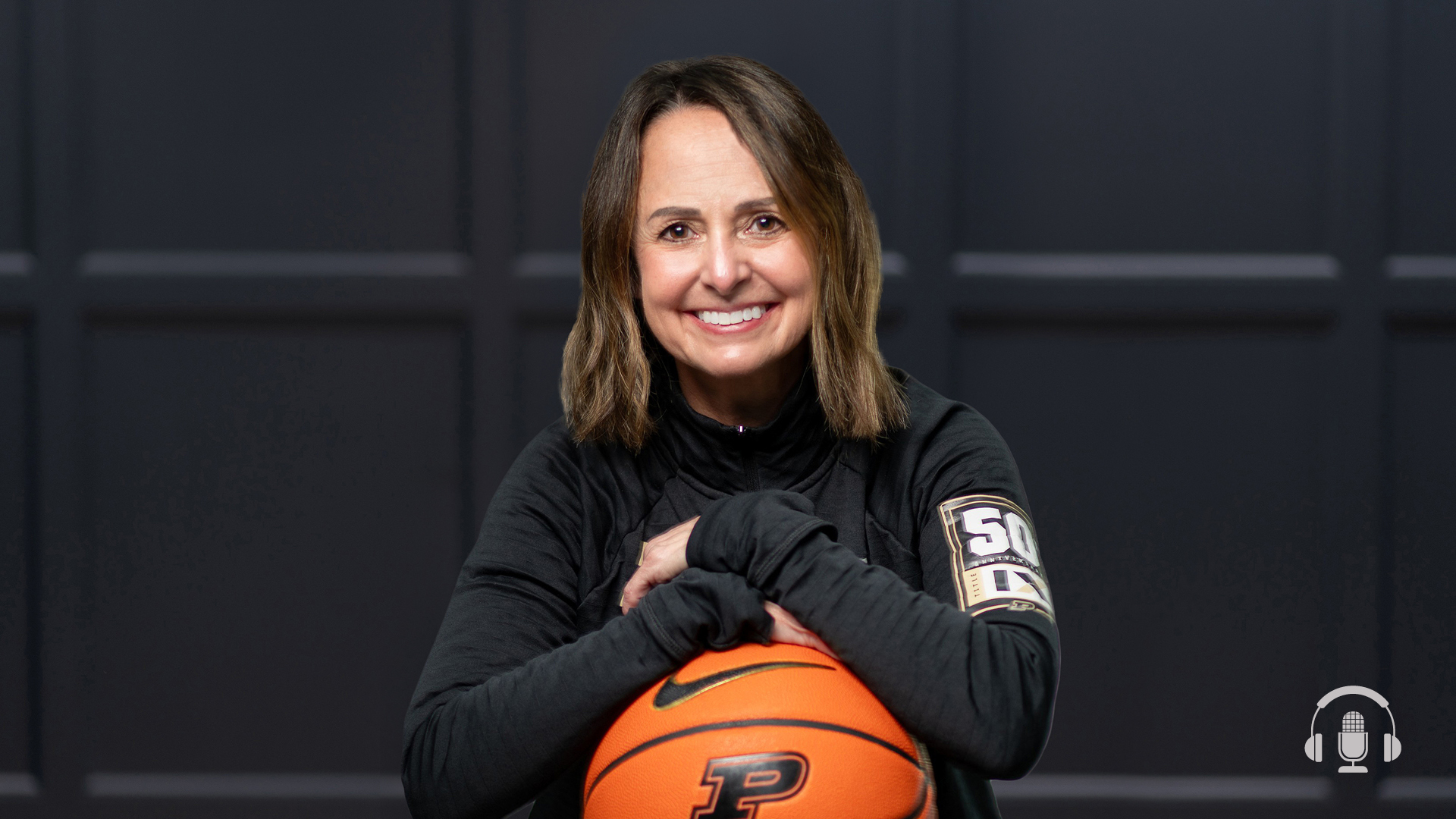Podcast Ep. 98: Greatest Hits of 2023: Celebrating Purdue Research Solving the World’s Toughest Challenges
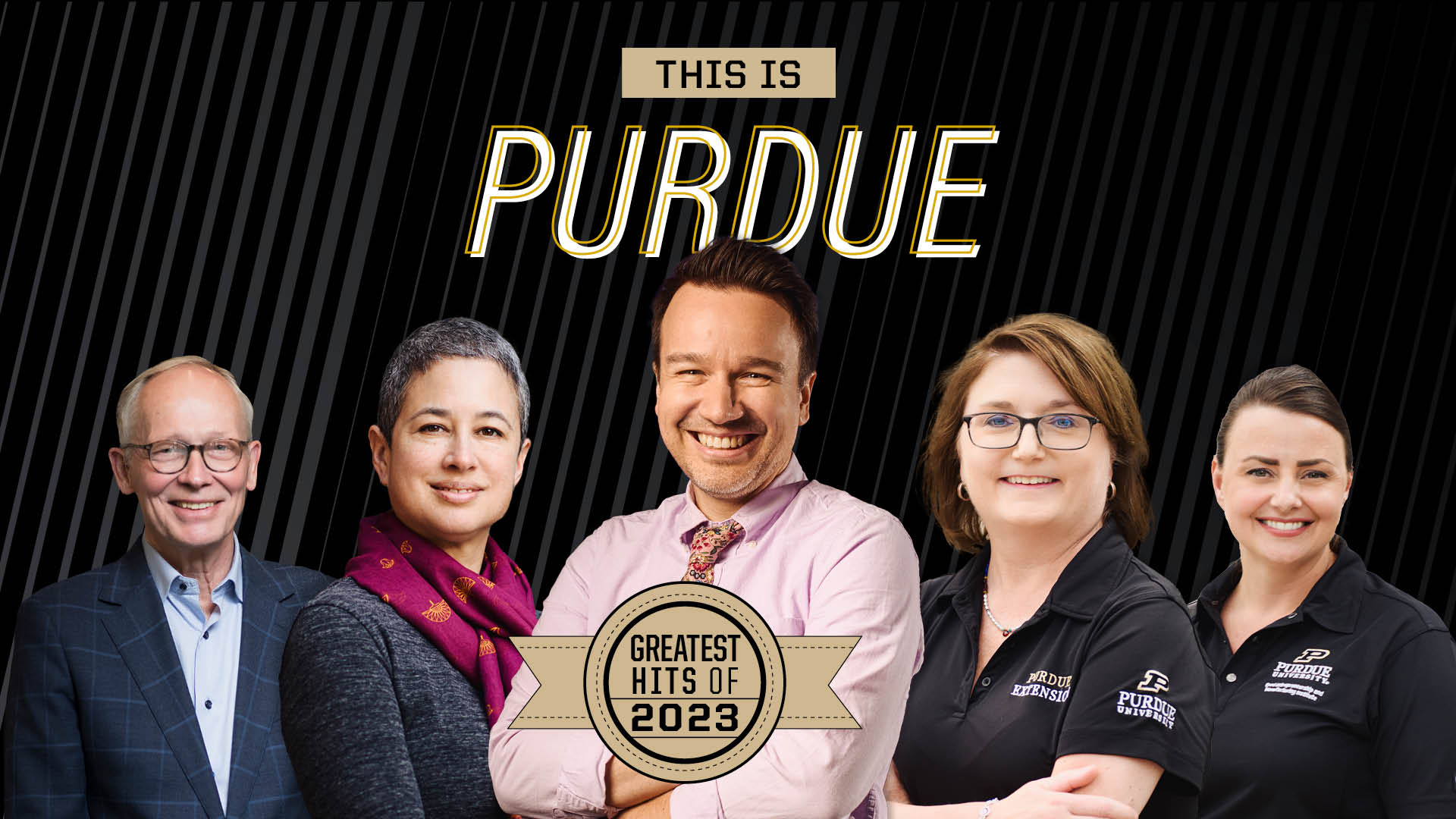
In this episode of “This Is Purdue,” we’re celebrating Boilermakers who provide practical solutions to the world’s toughest challenges.
Part 2 of our “Greatest Hits of 2023” shines a light on the incredible research advancements from Purdue Boilermakers as we reflect on all four of our 2023 Research Series episodes.
Listen as we highlight special moments from episodes with Purdue’s chief semiconductor officer Mark Lundstrom, food science professors Amanda Deering and Haley Oliver, associate professor of physics and astronomy and principal investigator of a program on NASA’s James Webb Space Telescope Danny Milisavljevic, and bioarcheologist and professor of anthropology Michele Buzon.
From semiconductors to food science to astronomy to bioarcheology, these researchers share more about the impact Purdue has had on their monumental developments in their respective fields.
- Check out all of our “This Is Purdue” podcast episodes
- Subscribe to “This Is Purdue” on Apple Podcasts
- Watch our “This Is Purdue” video interviews and clips on YouTube
Full Podcast Episode Transcript
Mark Lundstrom:
This is Mark Lundstrom and you’re listening to This Is Purdue.
Amanda Deering:
This is Amanda Deering.
Haley Oliver:
And this is Haley Oliver.
Amanda Deering and Haley Oliver:
And you’re listening to This Is Purdue.
Danny Milisavljevic:
I’m Danny Milisavljevic, and you are listening to This Is Purdue.
Michele Buzon:
This is Michele Buzon, and you are listening to This Is Purdue.
Kate Young:
Hi, I’m Kate Young and you are listening to This Is Purdue, the official podcast for Purdue University. As a Purdue alum and Indiana native, I know firsthand about the family of students and professors who are in it together, persistently pursuing and relentlessly rethinking. Who are the next game changers, difference makers, ceiling breakers, innovators? Who are these Boilermakers? Join me as we feature students, faculty, and alumni taking small steps toward their giant leaps and inspiring others to do the same.
In this episode of This Is Purdue, we’re celebrating five Boilermakers who are providing practical solutions to the world’s toughest challenges. Part two of our Greatest Hits of 2023 shines a light on the incredible research advancements as we reflect on our inaugural research series episodes our podcast team produced this year. You’ll hear special moments from our episodes with Purdue’s Chief Semiconductor Officer, Mark Lundstrom, Food Science professors, Amanda Deering and Haley Oliver, Associate Professor of Physics and Astronomy, and Principal Investigator of NASA’s James Webb Space Telescope Program, Danny Milisavljevic, and Bioarchaeologist and Professor of Anthropology, Michele Buzon.
From semiconductors to food science to astronomy to bioarchaeology, these researchers shared more about the impact Purdue has had on their monumental developments in their respective fields. After all, Purdue wasn’t named one of U.S. News & World Report’s most innovative US universities for the last six years running for nothing. Boilermakers aren’t afraid to tackle challenges.
We’ll kick this episode off with our first guest featured in our 2023 Purdue research series, Mark Lundstrom. Mark’s role at Purdue is unique. He’s not the CEO, not the CMO, not the COO. He’s Purdue’s CSO, Chief Semiconductor Officer. See, Mark and so many other Boilermakers are working to ensure our country is prepared to meet the ever-growing demands for semiconductors which are found in virtually all of our electronic devices. That’s right. If you are listening to this podcast on your smartphone or on your laptop or maybe in your car, all of these devices contain semiconductors or chips. And in case you haven’t heard earlier this year, Fast Company named Purdue University number 16 among the world’s most innovative companies, and number one in education for its advances in semiconductors and microelectronics.
So, as the United States strives to reclaim a leading role in the global semiconductor industry, one university is leading the charge. Can you guess which one? I bet you can. Mark expands on semiconductors and why they’re so incredibly important. So walk us through what a semiconductor is. Why is this important? You’ve said that if we didn’t have semiconductors, we would be living life like it was the 1950s still.
Mark Lundstrom:
Well, so what is a semiconductor? So I think most people know what a metal is, right? A metal conducts electricity well, and an insulator doesn’t conduct electricity, like glass. And a semiconductor is somewhere in between. So you think, what’s the big deal? The big deal is that by introducing small amounts of other atoms in a semiconductor crystal, you can dramatically change its properties to make it more metallic or more semi-conducting. And that’s how we make electronic devices like the transistor, which is the basic building block of all electronics.
It’s made everything possible that we think about today. These smartphones that we carry around, they’re chock-full of chips. There are a few thousand chips in every automobile. I mean, it’s hard to imagine life without semiconductors.
Kate Young:
Absolutely. And why are they so important? Why is this research that Purdue is doing so important?
Mark Lundstrom:
The CHIPS and Science Act really has three objectives. One is to bring more semiconductor manufacturing back to the US. Because the technology was invented here, but over the past few decades, we’ve outsourced more and more of the manufacturing, and we learned during COVID how vulnerable we are to chip shortages in our supply chains. So we won’t bring all of the manufacturing back here, but we need to bring a significant fraction back here.
The other is that everything that we aim to do in terms of addressing all of the grand challenges we have will require more computing and more chips. Energy, clean environment, health, everything that’s going to rely on improved semiconductor technology. So we need to continue to advance semiconductor technology, regain our lead, and that’s what the CHIPS Act is all about.
Kate Young:
And how did Purdue become such a leading charge in semiconductor research and education?
Mark Lundstrom:
Well, we have a very long history in this space. We’re celebrating the 75th anniversary of the invention of the transistor this year, and that’s the basic building block of all electronic systems. A chip can contain as many as a hundred billion transistors these days, and it was invented 75 years ago at Bell Telephone Labs.
But Purdue was a hotbed of semiconductor research before that. In the 1930s and 1940s, the techniques that Bell Labs learned to grow high-quality semiconductor crystals, they learned from Bell Labs. So we go back a long time. The most common transistor that is used these days is called a silicon MOSFET. That was demonstrated for the first time in 1959 at Bell Labs by a Purdue alum, Mohamed Atalla, a mechanical engineering alum. So we’ve been teaching semiconductor courses since the late 1960s. We’ve been a major supplier of talent to the semiconductor industry for decades. The research and innovation has been important. So every Tesla automobile has 48 silicon carbide-powered MOSFETs in it. That transistor was invented at Purdue, was demonstrated in the Scifres Lab inside the Birck Nanotechnology Center by Jim Cooper, a faculty member here. We have a very long history in semiconductors.
Kate Young:
If you listen to part one of our Greatest Hits of 2023 episode, you know we had the honor of featuring Purdue President, Mung Chiang, on the podcast this year. He said in that interview that Purdue is the most consequential public university in America. So what is Purdue’s semiconductor research and education doing to help support that statement? Here’s Mark.
Mark Lundstrom:
A university that wants to be the most consequential university in the nation should address the most consequential problem that the country currently faces. And that problem is the semiconductor challenge because it underlies everything else that we want to do. So I think the fact that we have made this not only an engineering priority, but a university priority, that we feel we have a responsibility to help the nation address this challenge, that’s what the most consequential university would do.
Kate Young:
What do you think would happen if Purdue wasn’t doing this research?
Mark Lundstrom:
Others would, right? Others would step up. We probably have one of the largest concentrations of semiconductor faculty of any university in the nation. And it’s more challenging to do this kind of work. You need expensive laboratory facilities like the Birck Nanotechnology Center. So it makes it difficult for many universities to really have a substantial presence in this field. We’re one of the few.
Kate Young:
Be sure to check out Mark’s full episode to hear more about how Purdue University’s Elmore Family School of Electrical and Computer Engineering is helping to solve the semiconductor talent shortage, his experience having dinner with Neil Armstrong, and his passion for motorcycles. Just head over to purdue.edu/podcast or watch the interview on YouTube, youtube.com/@thisispurdue.
Our next research series episode featured not one, but two, innovative Boilermakers. Amanda Deering, Associate Professor of Fresh Produce Food Safety, and Haley Oliver, the 150th Anniversary Professor of Food Science, joined us this year to discuss a challenge facing the entire world. Food safety, security, and sustainability. And really what’s more important than feeding the world. Here’s Amanda, diving into what food science really is, and Haley follows with more about food sustainability.
Amanda Deering:
What I love about food science, it’s chemistry, it’s engineering, it’s packaging. All this goes into making a food product. And so we are an interdisciplinary program, and we have to be, and that’s the cool part to me. My office is next door to a chemist and then the next door down is an engineer. I love that. And so it’s not like we’re all just working on the same thing, but we all have our specialized areas. And it all comes together then to help the food industry in general.
Haley Oliver:
And I think the piece of the discussion where food science is going to really play a role looking forward is in sustainability. We have increasing population. We have climate change. How are we going to produce enough food and efficiently?
Food science is a major part of that discussion. We look at how much is lost, how much is wasted from primary production, manufacturing, and retail level. I try not to have my house be the place where fruit goes to die, but it’s a risk. But how do we prevent that? And food science is a big part of that discussion.
Kate Young:
So how is the research being done right here at Purdue University impacting the entire world? One example of how Amanda and Haley are-
PART 1 OF 4 ENDS [00:10:04]
Kate Young:
… In the entire world. One example of how Amanda and Haley are spreading the word internationally is their work on building a food technology department at a university in Afghanistan. And Haley is the Director of the Feed the Future Innovation Lab for Food Safety, which was established with the goal to improve food safety in Nepal, Bangladesh, Cambodia, Nigeria, Kenya, and Senegal. Amanda is also currently working on the PERU-Hub Project, part of a $15 million United States Agency for International Development Grant that involves helping farmers in Peru find alternatives to growing coca, the raw material for cocaine. Amanda and Haley share an example of how something as simple as a training course can drastically improve food safety practices.
Amanda Deering:
When we worked with a company in Chicago that was importing saffron from Afghanistan, and so they were rejecting about half of their shipments because they were all contaminated with human pathogens, so E. coli, salmonella, things like that. So what we did was actually go and train their workers, so it was their harvest crews and the people doing the processing, we trained them, just a training, on good agricultural practices and good manufacturing practices. In the following year, they didn’t reject one shipment. So it just goes to show that training goes a long way. And it’s not that people don’t want to do the right thing-
Haley Oliver:
Yeah, it’s awareness.
Amanda Deering:
Right. They’re not aware what the right thing is.
Haley Oliver:
As long as it’s economically viable.
Amanda Deering:
Yeah.
Haley Oliver:
Yes.
Kate Young:
Another interesting takeaway from their trainings in other countries such as Peru and Afghanistan include the importance of gender representation in food production. Amanda and Haley expand on this.
Amanda Deering:
We’ve really worked hard to include women in Indigenous populations with the trainings that we do. They are like sponges. They just want to learn. We’ve worked with a lot of chocolate manufacturers in that area, and it’s very interesting to see other developmental projects have been around there and help them get to where they are now. But it’s very interesting, they all produce exactly the same looking chocolate bar, the same recipe, the same packaging. So we’re working on the marketing side to help them make a fancier package so you can-
Haley Oliver:
How do you differentiate?
Amanda Deering:
Yeah, be different. And so I think that’s been the cool part, just working with that and literally just trying to figure out what are some new products we can make. So we have people working at Purdue in food science, how to turn passion fruit into something that’s not currently in their market. So we’ve been working with students to do passion fruit butter. What can they make that’s different and new that even the Peru people would support and purchase those products, or could it be for export? So both of those things have been probably the most interesting and fun part of that project.
Haley Oliver:
I’m glad… I forgot, as I do, as I age here, right? Gender, it’s a big part of the innovation lab as well. And why do we think about that? It’s because in many, many cultures, women make the decisions around food and even production or a big part of production. And so if they haven’t been included in the discussion or continuing education, you’re leaving out the labor force and deciders, and that’s not how you move the needle.
Kate Young:
I would’ve never thought about that.
Amanda Deering:
That’s how Afghanistan was too. When we started working there, we were training all men. Yet the men did not grow any of the food. They didn’t harvest any of-
Haley Oliver:
Or cook any of the food.
Amanda Deering:
The didn’t cook any of the food.
Haley Oliver:
They ate the food.
Amanda Deering:
Yeah, they ate the food, but yet that’s what we were training. And so during that project time, we increased the number of women, about 80%. We were doing then women only training, and that was when you could really have those discussions with women-
Haley Oliver:
Candid.
Amanda Deering:
Because if they were in a group with men that were present, they wouldn’t talk. They wouldn’t say anything.
Kate Young:
Sure.
Amanda Deering:
But when they were by themselves, they would ask questions, they’re involved, they’re engaged. And so that’s a huge part, targeting that right population. And in most countries, it’s surprising the amount that women do related to food.
Kate Young:
But what would happen if people like Amanda and Haley weren’t doing this research at Purdue? What if they weren’t visiting these various countries and doing these trainings? Well, it could result in truly worst case scenarios, people getting extremely sick and even dying. The two researchers discussed the Listeriosis outbreak of food poisoning across 28 US states, that resulted from contaminated cantaloupes in 2011. 33 people died, and 147 confirmed cases were reported in the aftermath. It was the worst foodborne illness outbreak in America, measured by the number of deaths, since the Centers for Disease Control and Prevention began tracking outbreaks in the 1970s.
Amanda Deering:
So we had the outbreak with the cantaloupe and salmonella that devastated the industry. And the industry basically as a whole said, we need someone at Purdue that does Purdue’s food safety. And that’s how my job came about. And so I’d like to think anyway that our growers in Indiana would have… They wouldn’t have that-
Haley Oliver:
They’d have more risk.
Amanda Deering:
Yeah. There’d be more risk and less support, because we’ll do anything with them. We come out and do farm visits. We work one-on-one with them. If there’s some research that they want, like looking at a new sanitizer treatment, we’ll do that research for them, do those experiments to see how well the sanitizer kills bacterial pathogens or not. We try to be everything to the industry that we can be. And so I guess I would like to think there’d be more risk if we weren’t doing what we do.
Haley Oliver:
When I was hired at Purdue in 2010, I was hired as a primary teaching appointment, which was a big leap actually for me, coming from a background of sequencing genomes. But being able to teach and have that knowledge transfer piece, I think over time that that was something that I could do at least moderately well. But our opportunities, so where does Purdue benefit maybe from what we do or how are we reducing risk? Because we do so much research for development or international development and have both a very domestic presence and experience of what is going on here in the Midwest, but also in some of the remote corners of the world, in economies that are up and coming. We can bring those experiences together.
Learned experiences in Indiana agriculture is translatable to production in Cambodia. There is translation there, but what we can then do with those experiences to bring back to the classroom, I think makes us much more effective. So probably bottom line, the utility’s in the classroom of a true measurable difference, because that’s how we can really spend a lot of quality time with our clients as students, and share or affect how they think about food safety going forward.
Kate Young:
Check out this full episode to learn more about the global food system, the next big thing in food science, alternative proteins, and how Purdue’s College of Agriculture is setting up students for success, whether they want to go into farming or work for a global food corporation. And by the way, our podcast team set up this interview with Amanda and Haley in the College of Agriculture’s potting lab, surrounded by lush greenhouses, plants, fruits and veggies. So if you want to experience the full visuals, check out our full video interview on our, This Is Purdue YouTube page, youtube.com/@ThisIsPurdue.
Our next episode from our 2023 research series was out of this world. We spoke with Danny Milisavljevic, Associate Professor of Physics and astronomy in Purdue University’s College of Science, in our third episode of this series. Because really, what’s a Purdue research series without an episode that highlights the extensive history of Purdue’s research and ties to space? Here’s a few things we covered in this episode. The most powerful telescope in the world, NASA’s James Webb Space Telescope, Cassiopeia A, a remnant of a supernova explosion in the Milky Way, located about 11,000 light years from Earth. A virtual reality field trip. Danny’s experience being interviewed by the Scott Pelley on CBS’s 60 Minutes, and Scary Barbie. Now, if you listened to this episode or maybe watched it on our, This Is Purdue YouTube channel, our podcast team shot this interview with Danny inside Purdue University’s Envision Center, located on campus in Stewart Center.
The photo that Danny frequently references in this episode was the centerpiece of our shoot, a massive, colorful, vibrant photo of a supernova explosion, also known as Cassiopeia A, or Cas A for short. Cas A was created by a stellar explosion 340 years ago from Earth’s perspective. Danny shared more about his work on the James Webb Space Telescope and how this incredible tool has been a major key to his research.
One of the most exciting things that you’re working on right now is the James Webb Space Telescope. Tell us more about this telescope. It’s the first of its kind, right? And how exciting that you’re directly working with it.
Speaker 1:
I don’t know how I can encapsulate that. I mean, right there behind us is a representation of power behind the James Webb Space Telescope. So it is the largest, most powerful telescope we’ve ever sent into space. And somehow I am among the first group of scientists that get to use this for their research. And it becomes particularly relevant for me in my understanding of stars and their life cycles, and how they come to dramatic ends. Because it’s sensitive to infrared light. Infrared light is sensitive to some of the material that we need to see in the exploded star to understand-
PART 2 OF 4 ENDS [00:20:04]
Danny:
… material that we need to see in the exploded star to understand what happened, to tell its story.
Kate Young:
Okay, so this research is compelling, it’s alluring, it’s headline grabbing, but why is this research important to everyone on this Earth? See, supernovae like the one that formed Cas A are crucial for life as we know it. And Danny says, by understanding the process of exploding stars, we’re actually reading our own origin story.
Danny:
The big picture is that without this fundamental process in the universe, of a star ending its life in this catastrophic implosion, explosion, ejecting its debris, seeding space with heavy elements, these are the raw materials that make life possible. The auction we breathe, the iron in our blood, calcium in our teeth. All these are thanks to the production of heavy elements from supernova explosions. And James Webb, again, is sensitive to the infrared lights from which these stellar explosions emit and can be traced back to closest to where the explosion took place originally.
Kate Young:
Take us back to the first time you saw the images from the James Webb Space Telescope. What were you feeling?
Danny:
Wow. So there’s two parts of that story. One is when I first saw any image from James Webb, and I had no special privilege like anybody else. I saw them with the public, and these were the first batch of images when the telescope was just feeling itself out. They’re calibrating and aligning. It was a really rough trip up there, so they had to make sure that the mirrors were precisely aligned. In that first image, even though it was just of a bright star, it was spectacular in its clarity. And most importantly, one could download those data and then you play with filters, you can stretch, you can make things highlight, and all of a sudden you could see countless galaxies in the background. And for me, this was this transformational moment in the history of human civilization. We’re so familiar with our naked eye, looking up at the stars at night, and knowing that the universe is filled with them.
But now with James Webb using infrared light, it was sense of it was seeing galaxies everywhere. There is no empty sky with James Webb because there are galaxies, billions and billions everywhere, so that was when the first image came out. The other momentous time is when I saw the first date of my own program. Now, what we see behind us here is after a lot of work, a lot of processing, a lot of arrangement, so like the panoramic filter on your phone where you can’t get everything in one shot, you have to pan it together, and there’s some software that stitches the frames. We don’t have that luxury. We had to do that all manually afterwards. What I saw was just a postage stamp area of the remnant, but when I saw it, two things. One, leading up to that moment was terror. Because unlike when I’m observing with a telescope at night, if I make a mistake, if I point it in the wrong location, fine, I adjust and re-expose.
But the complexity of the instrument, it’s a million miles away. Each command is critical and conservative, so you have to make sure that it was pointed at the right spot, and you have to make sure that the exposure’s the right length. As I’m waiting for that file to download, I’m thinking, did I do everything right? Did we as a team make all the calculations correct? And then when it opened up and I finally figured out where I was looking, because again, it’s a small postage stamp amongst this enormous mosaic that we’re making, that was the excitement. That was the moment of we did it, that this is working as anticipated. There’s no way to properly describe that moment. Thankfully it was captured by my wife. It actually came up on the 60 Minutes segment.
People don’t know this backstory, but it wasn’t 60 Minutes there watching me at the time. That was my wife laughing at me, recording video to share with her friends. Look, we were supposed to go out Saturday morning. Look what Dan’s doing. And I’m getting all excited about the data, and that’s what it ended up being. And footnote to that story, it was recorded on her phone. It’s at small scale. All of a sudden, when we watched that night on 60 Minutes, it’s on the big screen and you see all these details like some tortilla chip that had been left behind, and there is books and cords. We did not prepare this for international exposure.
Kate Young:
And I heard your dog might’ve made an appearance.
Danny:
Wilbur. Yeah, Wilbur is always there where something exciting is happening. And in this case, he could sense me getting excited and he associates that with his excitement, which is seeing some kind of rodent or animal running in the front yard, so that’s why he was looking outside the window at that time.
Kate Young:
Remember, you can actually watch Danny’s reaction, and his dog Wilbur’s reaction, on our podcast YouTube channel. All right, let’s take a little trip down memory lane, shall we? It’s July of 2023 and the highly anticipated movie Barbie was released by Warner Brothers. Since then, it’s become the highest grossing film of 2023 in the US and worldwide, and made director Greta Gerwig the only solo female director to have a movie reach the $1 billion mark. So what does this have to do with our research series? Well, Danny and his team had their own version of a Barbie summer too. Danny and I had the opportunity to discuss something that’s recently been making a lot of headlines. Barbie. Okay, okay, but not that Barbie. Scary Barbie. So it feels like the whole country knows that there’s a Barbie movie coming out, right?
Danny:
Yes. Yes. I’ll be there.
Kate Young:
So you and a team of researchers are also studying this, but I want you to tell us about it because it’s called Scary Barbie, and was the name picked on purpose to go along with this Barbie mania? I need to know.
Danny:
So, no. A crazy name for a crazy object. This was the result of a project we’ve been running here at Purdue for several years. What we’re doing is using sophisticated computer algorithms to be able to find unusual, interesting cosmic explosions, because they’re happening all the time. In fact, in the universe, there is a supernova that happens about once every second. So if you listen for it, maybe you can hear a supernova explosion. You can’t, but I always like to have that bit of dramatic elegance. Anyway, we have an algorithm that’s picking things. And at some point, the system identified this anomaly, and something was different about it from the get-go. Because there are so many candidates for these cosmic explosions, they get identification numbers that are automatically generated and they’re very boring. This one was ZTF20ABRBEIE, which is a mouthful and that’s not fun.
But one night, one of our graduate students, Danielle Dickinson, was late night and she looked at it cockeyed. She’s like, “It looks like Barbie,” so the name stuck then. That’s why we were calling it Barbie. I started calling it Scary Barbie when I fully appreciated just how energetic and explosive it was, so we were looking for supernovae. This event, once we identified the distance, and that’s always one of the biggest hurdles in astronomy, I see something, but how far away it is? But at some point we were able to measure the distance, and this made it not like a supernova explosion, but something that was a thousand times more energetic than a supernova. And I don’t know if these numbers really reverberate with people, but for an astronomer, that scares me. Already, a supernova explosion is scary in energy. Think of the sun. Over its entire lifetime, 10 billion years, you take that energy, you multiply it by a hundred, and that’s what a supernova makes in one second. Now we have scary Barbie that’s a thousand times more energetic than that. Terrifying, scary. That’s where the name came from.
Once we follow the trail of evidence, ultimately we realize that the only mechanism we know that can produce something of that energy is the supermassive black hole we find at the centers of galaxies. People may be familiar with the mystique of a black hole, this singularity from which not even light can escape. Well, there are very large ones at the centers of just about all galaxies, including the Milky Way, and they can be up to and larger than a billion times the mass of the sun. Here’s these large numbers again. But black holes are basically the most efficient method of taking matter, stuff. I don’t want to think about us falling into a black hole, but taking matter and converting it into an energy. That’s why we ultimately favored the scenario that this wasn’t a supernova explosion, but a supermassive black hole that was tearing apart a star that was falling in nearby.
Kate Young:
So what would happen if Purdue wasn’t leading this research, if Danny wasn’t the principal investigator of the James Webb Space Telescope Program?
Danny:
If we at Purdue weren’t leading this, I could easily name off dozens of other scientists at other institutions that would want to take the lead. This is the best example we have of a star that’s exploded in our own galaxy, the Milky Way. This must be studied, and this is why it was selected as one of the first targets for Webb.
PART 3 OF 4 ENDS [00:30:04]
Speaker 2:
… and this is why I was selected as one of the first targets for Web. It’d also be sad if Purdue didn’t have it because we wouldn’t be able to brag that we’re the only Indiana institution as being a principal investigator on a Web program, so that’s cool.
Kate Young:
This episode is a super visual one. For example, you can watch our virtual reality field trip in Purdue’s Envision Center firsthand. Just head over to our YouTube page, youtube.com/@thisispurdue, to check it all out. Trust me, you don’t want to miss it.
Our final 2023 research series episode featured Michele Buzon, Professor of Anthropology at Purdue University’s College of Liberal Arts. As a bioarchaeologist, Michele’s examination of skeletal remains can help us better understand the lives of everyday people who lived thousands of years ago. Michele’s research brings many different people and disciplines together as she and her team look to better understand the past, from relationship-building with the local community in Sudan to analyzing finds, so let’s dig in. What exactly is bioarchaeology? Michele explains.
Michele Buzon:
Bioarchaeology is the excavation and analysis of human skeletal remains from archeological sites. And in looking at human skeletal remains, we can learn about health and disease, daily activities, injuries, diet, these sorts of things in people of the past. And what’s really important about bioarchaeology is that it is the window into the past for most people who existed because while historical records do exist, they don’t exist for everyone. And when they do exist, they’re written by a select few. And so this is really our glimpse at people in the past, too, who have no voice otherwise.
Kate Young:
Michele and her team spent a few months each year along the banks of the Nile River Valley in Tombos, Sudan, exploring what life was like in ancient Nubia more than 3000 years ago and why that still matters today. See, Michele is conducting her research on Nubian burial sites, dated all the way back to 1500 BCE, to better understand the relationship between the Nubians and Egyptians during the New Kingdom Empire. Michele and her longtime collaborator, Stuart Tyson Smith, have worked on digs that uncovered an ancient horse burial found more than five feet underground in a tomb, with some of its chestnut-colored fur still intact. And over the years, Michele and her team have unearthed hundreds of artifacts, including pottery, tools, carvings, and dishes. Michele shared what her biggest aha moment has been in her more than 20 years of research in Tombos so far.
Michele Buzon:
It’s definitely related to those sorts of discoveries about what the Nubians were doing when the Egyptians had occupied their land. We expected that everybody would take on these Egyptian cultural features and go along with the Egyptians, but that’s not true. They were asserting their independence, their identities, and showing that their Nubian culture, their Nubian identity, was there all along and never disappeared.
Kate Young:
And as for the most challenging part of her research so far in her career, well, when she ran into a roadblock, she pivoted and persisted like a true boilermaker.
Michele Buzon:
So we never really know what we’re going to find in the ground. We write draft proposals, we come up with ideas, but until we start actually excavating, it’s a surprise. So we had started working on these pyramid tombs at Tombos. They are very deep. They’re several meters deep into the ground, and when we started excavating them, we found that they were actually being affected by groundwater. So the remains inside, the soil inside, was actually quite damp, which means the preservation of materials wasn’t very good, and it made it difficult to work on these tombs. That’s pretty disappointing when you think the thing that you’re starting to work on isn’t going to work out. So what we realized is that there were small subsidiary graves, these pits around the big tombs, which we only started finding when we were clearing around the large tombs. And what came of those pits was that this is where the children were being buried, where some of the younger individuals were being buried.
We hadn’t found many children at Tombos over a few different seasons of excavations, and so this was actually a really great discovery that the children were being buried in these types of graves and that we could increase the sample of that segment of the population and learn about the children. The children are really key in understanding health in a community and also understanding society. So one of my graduate students who finished her PhD a few years ago, Katie Whitmore, she worked on the children and health and found some really interesting things. So for instance, individuals around the time of puberty, so early teens, were the ones who had a lot of issues in terms of health. This is a time period where they’re leaving their families, they’re starting their own families, they have more work opportunities. And so by increasing this sample of younger individuals, we were actually able to learn more about society and what people were experiencing
Kate Young:
And what would happen if this boilermaker and her team weren’t doing this innovative research?
Michele Buzon:
Anthropology is a field that not that many people know about, and we have worked hard to introduce it to the public, to introduce it to younger kids, by visiting their schools, by going to community events like Boo at the Zoo and other sorts of things to try to introduce anthropology to people. When I went to undergraduate, I was interested in history. I was also interested in health. My father is a retired physician. And I was also interested in different cultures. My father is an immigrant from the Philippines. And so going to school, I didn’t realize that that was something that I could all do together. And when I took my first anthropology class, it was an aha moment of learning that I can combine all of these interests into something that I could pursue a career in. And I’m fortunate at Purdue that we do have colleagues in these different areas where we combine culture and religion and philosophy, as well as society and different aspects of human life, to create the best solutions for our problems today.
So in anthropology, we are working in our teaching and our research and our engagement with different partners across campus in engineering and technology and health and many other areas to show people as a public university with a service mission, as a land-grant university, that understanding humans in a holistic way is the best way to address our challenges. I feel like I’ve made an impact in terms of bioarchaeology in Sudan, and certainly I have a lot of wonderful colleagues who are working there as well. But I feel like with my collaborators, Stuart Tyson Smith at UC, Santa Barbara, Mohamed Farouk, my Sudanese collaborator, that we have shown researchers how to do this in a very interdisciplinary and collaborative way where we are taking information from all of these different disciplines and from different specialties, and doing it together rather than having it separate. And so I feel like we have made an impact in terms of how to holistically look at the past through different approaches.
Kate Young:
And why does this research matter to every single one of us on this planet?
Michele Buzon:
As an anthropology professor, I of course will say that it’s important for everybody, but understanding humans is important. It’s important for engineering solutions. It’s important for healthcare professionals. For anybody working and understanding humans, you need to realize that people vary in different ways. And in order to find the best care, the best solutions, it’s important to be able to recognize those differences.
Kate Young:
If you’d like to check out our full video interview with Michele, head over to our podcast YouTube page, youtube.com/@thisispurdue, or listen wherever you get your podcasts. In the full episode, Michele shares more about her digs, the relationship between the Egyptians and Nubians, and the Sudanese culture. I hope you all enjoyed reflecting on these research series episodes. Stay tuned for 2024 as we are continuing this series with new boilermaker researchers who are providing practical solutions to the world’s toughest challenges. And we want to hear from you. What was your favorite This is Purdue episode from the past year? Share a review on Apple Podcasts or tag us on social media @lifeatpurdue, and use the hashtag #thisispurdue, and you could be featured in an upcoming episode.
This is Purdue is hosted and written by me, Kate Young, and I want to give a shout-out to every Purdue team member who was part of the podcast this past year. Our podcast videography is led by Ted Schellenberger, in collaboration with John Garcia, Thad Boone, Zach Mogensen, Alli Chaney, Matt Kerkhoff, and Jonathan Hoard. Our social media marketing is led by Maria Welch and Ashley Shroyer. Our podcast distribution strategy is led by Teresa Walker and Carly Eastman. Our podcast photography is led by John Underwood and Rebecca Robinos. Our podcast design is led by Caitlin Freeville. Our podcast team Project Management is led by Rain Gu and Emily Jeselaitis. Our production assistant is led by Dalani Young. Our podcast YouTube promotion is managed by Megan Hoskins and Kirsten Bowman. Additional writing assistance is led by Joel Meredith. Podcast research is led by Sophie Ritz, and our This is Purdue intern is Carolyn Keim. Thanks for listening to This is Purdue. For more information on this episode, visit our website at purdue.edu/podcasts. There, you can head over to your favorite podcast app to subscribe and leave us a review. And as always, boiler up.
